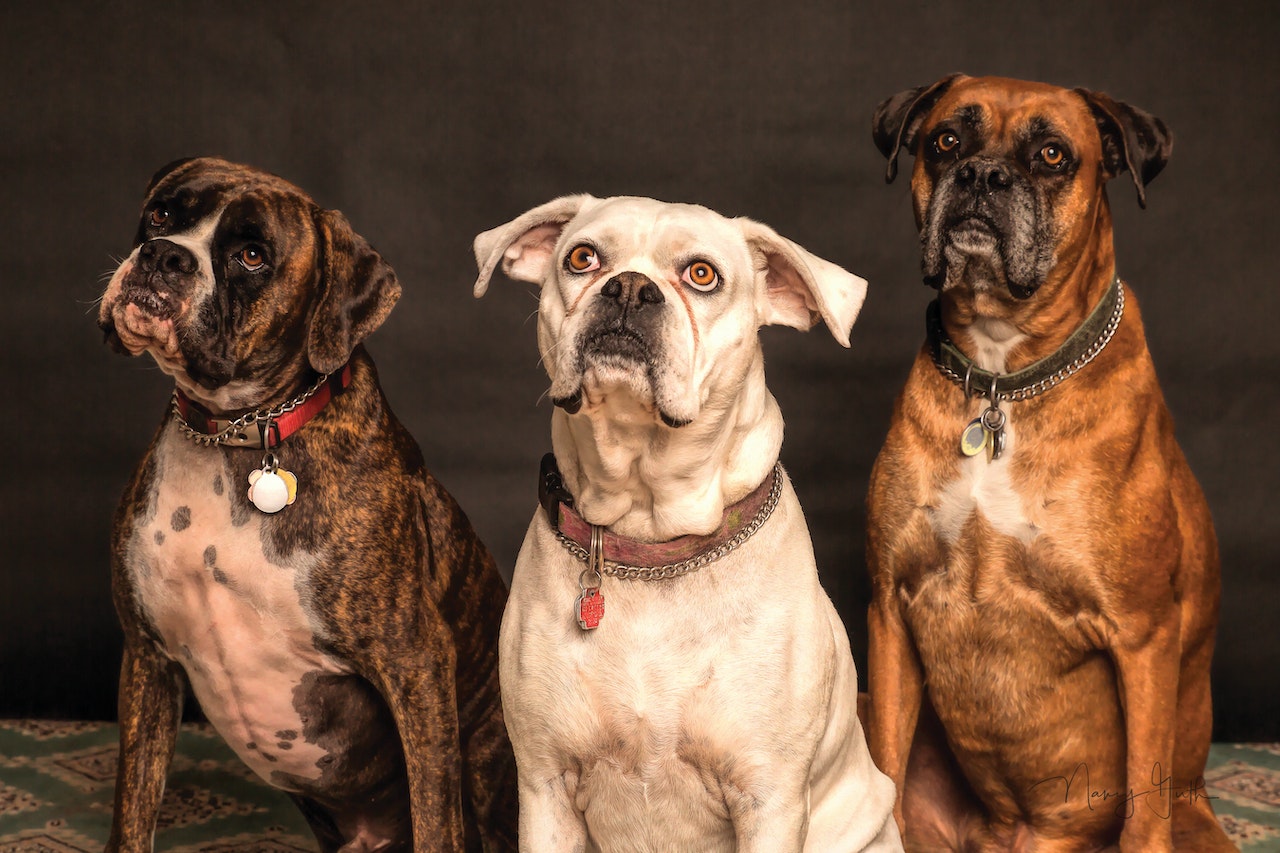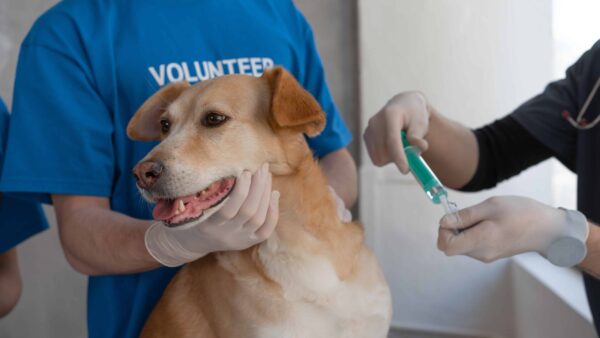The security and comfort of your dog buddy should be one of your top priorities as a dog owner, especially when it comes to their collar.
For identification, lead attachment, and training purposes, collars are necessary, but it’s important to make sure that they are not excessively loose or tight. The “two-finger rule collar,” frequently used for ensuring that a dog’s collar is properly fitted, comes into play here.
How loose should a dog collar be – a two-finger rule dog collar for your dog’s safety and well-being are all covered in this blog post.
How loose should a dog collar be
To establish how loose a dog’s collar should be, many people use the “two-finger rule.” According to the guideline, there should be space for two fingers between the dog’s neck and collar.
By doing this, you can prevent the collar from being excessively tight, which could make your dog uncomfortable or even hurt him, or too loose, which might cause him to slip out of the collar or catch on things.
It’s crucial to remember that the two-finger rule is only a suggestion and might not be suitable for all dogs. Breeds with narrow necks, like Greyhounds and Whippets, may need a tighter collar to prevent slipping out.
Dogs with thicker necks, on the other hand, could require a looser collar to prevent obstructing their breathing or irritating them.
Also, it’s important to frequently check the fit of your dog’s collar and make any necessary adjustments. While older dogs may require a looser collar due to weight gain or other changes in their body structure, puppies and developing dogs may require their collars adjusted more frequently.
The two-finger rule is an excellent place to start when making sure your dog’s collar is fitted properly, but it’s also important to take into account your dog’s specific requirements and make any required modifications. Your dog will feel secure and comfortable while wearing a collar that is properly fitted.

Two-finger rule dog collar
To make sure a dog’s collar isn’t excessively loose or tight, people do employ the “two-finger rule” for collars. According to this regulation, there should be enough room for two fingers to fit between the collar and the dog’s neck.
For your dog’s safety and comfort, the dog collar must be fitted properly. An overly tight collar might hurt, make breathing difficult, and possibly create discomfort. On the other hand, a collar that is too loose can come off, which could result in your dog losing his life.
How many fingers should I be able to fit in my dog’s collar?
Place two fingers flat against your dog’s neck and slide the collar over them to measure according to the two-finger guideline. Two fingers should be able to go comfortably underneath the collar while it is slack enough to prevent the collar from moving around easily.
It’s important to remember that the two-finger rule is only a suggestion and that not all dogs will exactly fit within this range. To prevent pain, dogs with thicker necks may need a looser collar than breeds with thin necks, such as Greyhounds.
It’s also important to regularly examine the fit of your dog’s collar. While older dogs may require a looser collar due to weight growth or other factors, puppies and developing dogs may require their collars adjusted more frequently.
To guarantee a correct fit, start by measuring for a dog collar using the two-finger rule. To ensure your dog’s comfort and safety, you should take into account their specific demands and make any required modifications.
How do I know if my dog’s collar is too loose?
If the collar on your dog is too loose, it may slip off or catch on anything, which could be harmful to your dog. The following ideas could indicate that your dog’s collar is too loose:
1. The collar slides right off your dog’s head:
Even when it’s attached securely, a slack collar may allow your dog to simply remove it from their head.
2. The collar slips around on your dog’s neck:
If the collar is too loose, it may move around on your dog’s neck, which could be uncomfortable and make it challenging to attach a leash.
3. Your dog’s collar is hung loosely around its neck:
The collar may be overly broad and inadequately supporting or identifying your dog if it hangs loosely around its neck.
4. The collar’s tags hang too loosely:
The tags on your dog’s collar may be too loose and need to be changed if they are jingling or dangling all the time.
It’s very important to change your dog’s collar to make sure it’s correctly fitting if you detect any of these symptoms. To evaluate whether the collar is too loose or tight, use the “two-finger rule.” Remember that your dog’s safety and comfort depend on a correctly fitting collar, so it’s vital to check the fit frequently and make modifications as necessary.
How should a proper dog collar fit?
A correctly adjusted dog collar should be loose enough to allow your dog to move their neck freely and snug enough to prevent it from slipping off. Here are some general recommendations for adjusting the collar on your dog:
1. “Two-finger rule” application:
The collar should be snug but not too tight around your dog’s neck. Two fingers should fit between the collar and your dog’s neck. The collar can be excessively tight and could hurt you if you can’t fit two fingers inside of it.
2. Examine the fit frequently:
When your dog grows, puts on or loses weight, or changes shape, the collar may need to be adjusted. Regularly check the collar’s fit to make sure it’s still snug.
3. Make sure the collar is straight and not twisted:
A twisted collar can irritate and inflame your dog, so make sure it rests level against his neck.
4. Verify ID tags
If you put ID tags on your dog’s collar, watch out that they don’t add too much weight or make the collar excessively heavy. Even with the tags still in place, the collar ought to fit tightly.
5. Think about the collar’s style
Various collar styles, such as martingales and choke collars, may have varying sizing recommendations. Make sure you are aware of how to use and fit the particular sort of collar you are using.
Remember that your dog’s safety and comfort depend on having a collar that fits properly. Consult a vet or trained dog trainer for advice if you’re unclear on how to correctly adjust your dog’s collar.
Conclusion
Your dog’s safety and comfort depend on a correctly fitted dog collar. When choosing the right fit for your dog’s collar, the “two-finger rule” is a good place to start. However, it’s important to also take your dog’s needs into account and make any necessary adjustments.
Always check your dog’s collar’s fit and making sure it lies flat and isn’t twisted will help you avoid pain or harm. It’s crucial to learn how to correctly fit and use the sort of collar you have because different types of collars may have different fitting instructions.
FAQ
Can a collar cause injury to my dog’s neck if it’s too tight?
If a collar is too tight, it can cause injury to your dog’s neck, including irritation, hair loss, or even damage to the trachea. It’s important to ensure that your dog’s collar is snug but not too tight.
Are there any alternatives to traditional collars?
There are several alternatives to traditional collars, including harnesses, head collars, and martingale collars. Each type of collar has its benefits and drawbacks, so it’s important to research and choose the best option for your dog.
Should I remove my dog’s collar when they’re indoors?
It’s generally safe to leave your dog’s collar on when they’re indoors, as long as the collar is fitted properly and not causing any discomfort. However, if you have a young puppy or a dog that’s prone to getting its collar caught on objects, it may be safer to remove the collar indoors or unsupervised.
Before you go, you can also read: How often should you bathe your dog?







Leave a comment